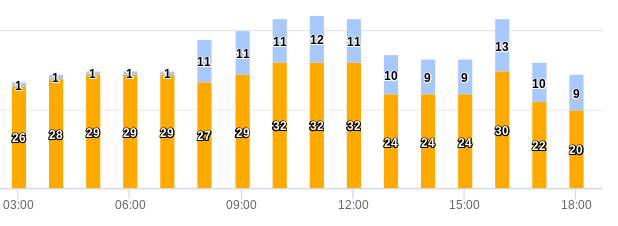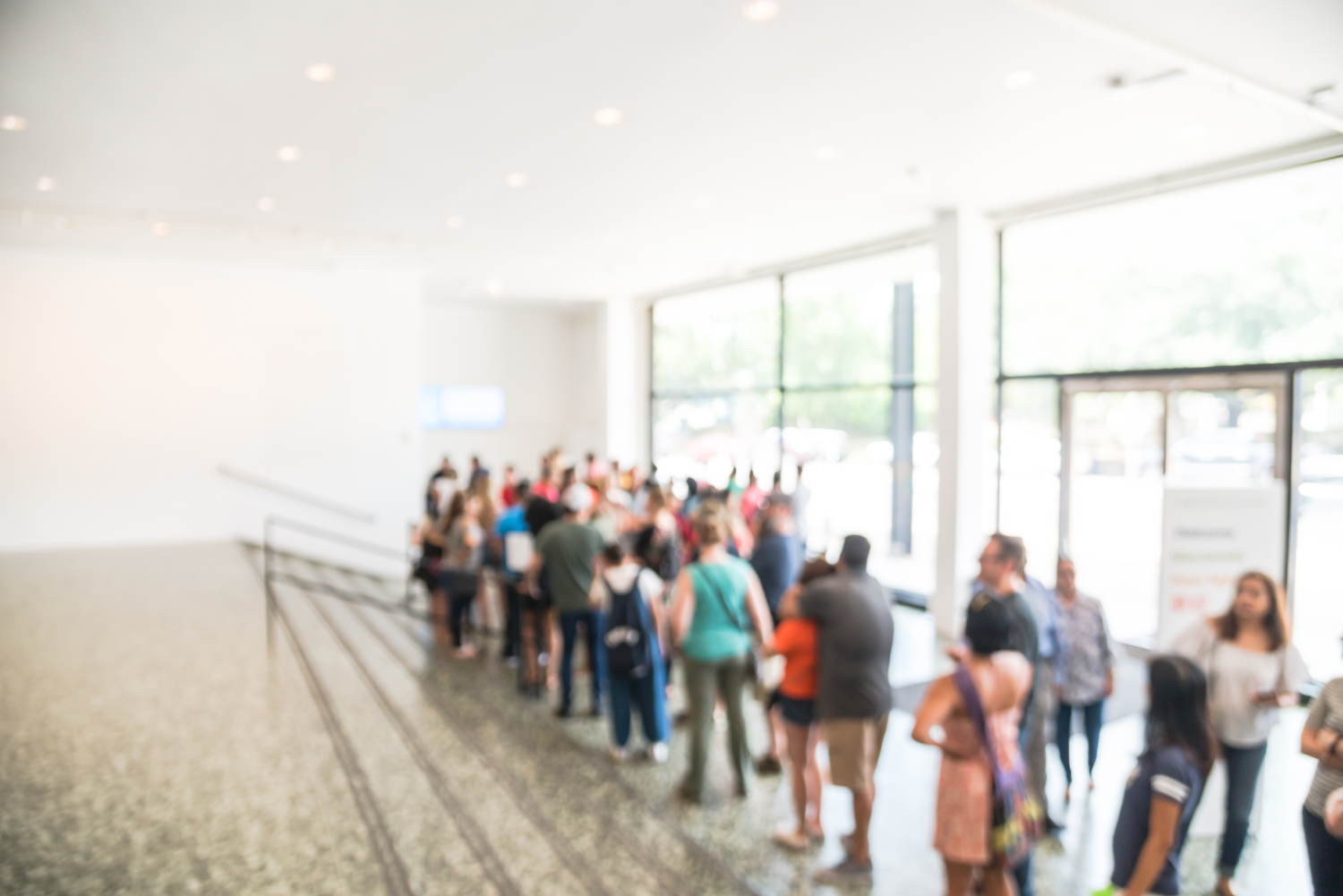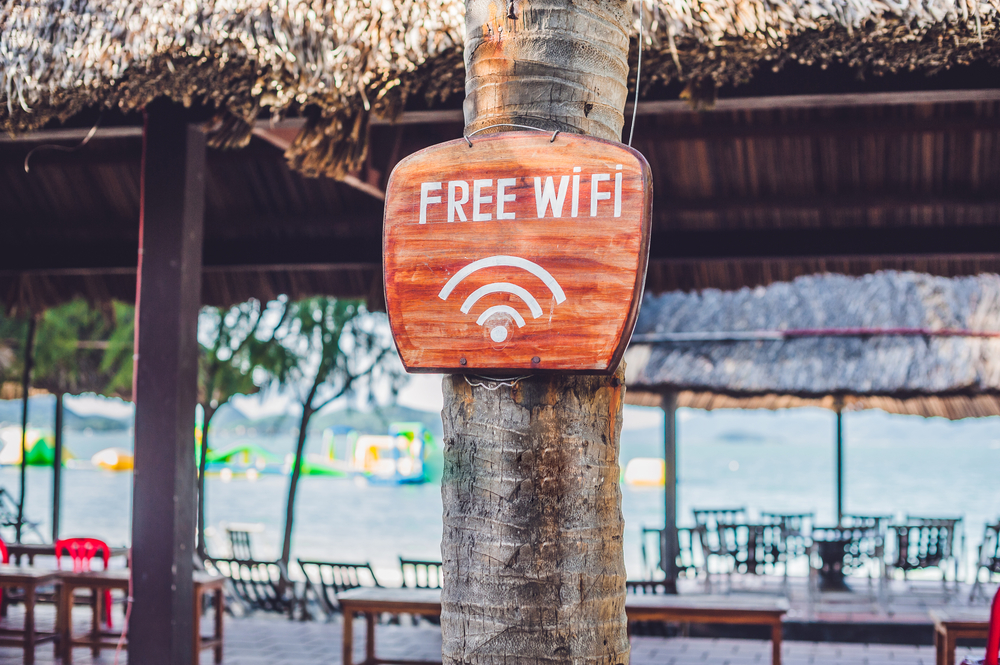5 Ways for Co-Working Spaces to Increase First Time Visitors
Getting first-timers through your door is one of the hardest marketing tasks, especially when on a tight budget. As a co-working space, you are vital to your business community. It’s important that you promote your space so that new business owners look to you to plant their roots. Let’s go over a few ways to do that.
Promote Spectacular Events
Putting together the right events is all about finding the right audience. There are a ton of meetups that draw a crowd of existing and aspiring entrepreneurs, and a co-working space is a great place to host them. Advertise a fireside chat with a local business founder, or host a lunch-and-learn for professionals. Skill workshops will consistently draw in motivated people while also establishing your co-working space as an educational outlet. If one of your tenants is releasing a new product, celebrate! Parties are an excellent way to build hype for a startup while the venue gets free advertising.
Partner with local organizations
Your space is a nexus of entrepreneurial activity. Connect with as many interested parties as possible. Get listed on the Chamber of Commerce website and build relationships with the leaders. Be aware of any overlap in opportunities that can get your space billed on Chamber of Commerce messaging. It’s also beneficial to build relationships with accelerators and entrepreneurship initiatives. Promote each other’s events and work on becoming an essential and symbiotic part of the local startup ecosystem.
Public Speaking
The best way to build authority in your space is to make personal connections, and the way you do that at scale is by public speaking and publishing content. Speaking at events performs both functions by giving you a platform in front of the present audience and then offering the opportunity to publish that talk later. Take the raw footage and edit it into sound-bites, commercials, pictures, and long-form content that you can re-purpose for years to come.
Sponsor other organizations
Events like Startup Weekends, Startup Accelerators, and user groups are always looking for a good place to host their event. Instead of charging for the event, give the space for free to be listed as a sponsor. If you have the budget, sponsor related community events like art festivals, community fairs, etc. This helps make your brand present and top of mind as your future community members travel to different activities throughout the city.
#BeSearchable
In today's world, people's attention is split between the digital and physical world. There might only be 50 people that come to a tech talk, but there are easily another 50 that will watch the video later on YouTube. Make it obvious how potential future members can find you on Google, Twitter, Facebook, or YouTube. Consider adding your coworking name, @twitter_handle, or website url in front of your speaker podium. You have a space in the real world that will show up in pictures and videos across your community. Make sure it's clear where the events are happening to help grow your community.
How to Identify What Caused a Spike in New Visitors
A big jump in new users can be great news, but you need to understand who these people are and where they come from. Let’s take an example from our Analytics to look how you can break down a recent influx of visitors and gain valuable insight from it.
Here’s a screenshot from our New vs Return Visitor dashboard:
You can see that there was a large spike in First Seen users in the latter half of the month. Let’s zoom in and take a closer look at the time-frame where the spike takes place.
By changing the date range to 5 days, it’s easier to see that the 23rd of January had 17 first seen visitors. That quite a bit more than any other time of the month, so we want to take a look at it in even closer detail. To do that, still in the New vs. Return Visitors report, choose the Date Range and change it to the 23rd for both dates. Then expand the Advanced tab, and set the Show Hourly from No to Yes.
From here we can see that first seen visitors started to appear around 8AM PM, and stayed until 6 PM. Now we can start to compare results to our calendar and see what may have happened. By looking at your programming for the day, you can see if there was an all day event scheduled that day starting around 8am. Community centers will see spikes for things like election polling, new programs, musical guests, or other community events.
How does this help?
If an event at your space is particularly successful at bringing in first seen visitors, there's a good chance events like this can help grow your community. You might want to run an event like this again if you're trying to get new patrons into your space.
What if there wasn’t an event on that day?
If you don’t know of a programming reason for why there are so many new devices on your network, there may be a technical one. Adding a new scanning agent to your network will result in all of the devices it’s found showing up as first seen. The way that you can avoid this is by setting up a Shared Privacy Key in the Privacy settings on the agent. Alternatively, you could have had new machines installed that day by your IT department, and all of the equipment is showing up as new.
Understanding First Seen, New, and Return
It’s helpful to understand how First Seen, New, and Return Visitors are calculated. First Seen is what a visitor is labelled the very first day they are seen on the WiFi. New is what a visitor is labelled for the next 30 days that they use the WiFi. And finally, Return is what a visitor is labelled if they visit the library again any time after that.
This is important to understand when you're first using WhoFi. For the first 30 days that you're using the system, all of your visitors will be labelled as First Seen or New Visitors. But at around 60 days, the system has had enough visitors come through the space to give numbers that you can use to make programming and other decisions. At around the 60 day mark, WhoFi has also had time to calculate staff devices and network equipment vs real visitors and will filter out the equipment so you can get higher quality insights.
We know that being able to get exact counts on people who visit your space is vital. We are constantly improving our algorithm to ensure that you get quality analytics that help you make informed decisions.
5 Questions to Ask Yourself when Unique Visitors Drop
Working with statistics is all about asking the right questions. It was Mark Twain that said,
“Facts are stubborn things, but statistics are pliable.”
It’s human nature to relax when things are improving, and panic when it looks like things are getting worse. Statistics tell a story. A downswing in visitation numbers begs several questions to ask yourself before coming up with a response.
1. Have the Open Hours or WiFi Hours changed?
Open hours have the most significant impact on how many people visit your organization. If you have multiple locations, cutting hours on smaller branches can have a big effect on visitation throughout a year. Also, if you normally leave your WiFi on 24 hours a day, and have recently changed this to only being available during Open Hours, you should also expect a decrease in users.
2. Did you change the WiFi Setup?
Technology is always moving quickly, and upgrades happen all the time. It’s important to keep in mind that your network configuration affects how and when people will use it. For example, you may have:
-
- Added a splash page. Splash pages force visitors to sign-in to use the WiFI. Just adding this simple step will lose users. However, that’s not necessarily a bad thing. Often the users who drop are residents and employees in the nearby area. Forcing them to log in means most won’t bother. In that case, adding a Splash Page is a great idea, and means you can focus on your patrons.
- Changed internet providers. Switching Internet Providers can save you money, but it might also add headaches. Some providers are better than others, and if patrons have to deal with slow speeds and frequent interruptions, many of them will leave.
- Changed the WiFi password. If you recently changed the WiFi password, is the new password clearly visible? If visitors are required to speak to a staff member to get the new password, this increased friction can also decrease your user counts.
3. Has your staff changed?
The people who work for you are the face of your organization, and they make a huge impact. Have any great employees recently moved on? Unfortunately losing warm and friendly people can result in a lower return rate for regular visitors.
4. Has programming shifted?
Are there any regular events that have been recently discontinued? Some communities rely on public spaces to meet up, and even a few small events that meet regularly will be a noticeable loss over time. If there are some gaps in your programming, find some new communities that are looking for a home.
5. How’s the weather?
Never underestimate Mother Nature’s ability to surprise you. Pleasant weather brings people out into the sun, while extreme conditions have us sheltering in our caves. A seasonal downturn can be exacerbated by inclement weather, so hang in there and hold out for Sun! In a future post we'll discuss seasonality and its effect on your visitor rates as well. Also be sure to consider other environmental factors like sidewalk construction or other distractions that might cause visitors to choose not to stop by.
How to Attract Repeat WiFi Users
Grace had been the director of her Library for 12 years, but she was facing a problem. Her analytics showed that hundreds of people from the community were using the WiFi, but most of them were only using it one or two times and then not coming back. Something was causing guests to visit one time and then disappear. The community impact of her library was decreasing because of poor visitation. Grace needed a plan of action on how to entice people to continue using the Free WiFi at the library. We compiled this list of steps that any community focused organization can use to increase return visitation on your Guest WiFi.
1. Provide Fast Internet
The most critical step to pleasing your WiFi users is making sure that your internet speeds are fast enough. Visitors will want to be able to stream high-definition video and upload small files to the internet. That puts the pressure on your IT infrastructure to deliver good speed to all of your users.
There’s nothing more frustrating than your internet failing while you are trying to complete an important task. For job-seekers and students, it’s critical that they have access to a reliable internet connection for things like online exams and job applications.
If your library, coworking space, or coffee shop becomes a trusted source for fast and reliable internet, people in your community will come to rely on it for productivity.
2. Offer a smooth sign-in process
Visitors expect a seamless and secure sign-in process. The details depend on what you are trying to capture and what your community expects. Do you want people to sign on with:
- Shared WiFi password
- Library card
- Social media account
- Email address
- Phone number
Usually, you’ll want to have a WiFi password on your guest WiFi. This is good for you to ensure that the people who have been inside your property are the ones connecting. This is also good for them as it prevents their phones and tablets from being compromised by bad actors.
However, if you offer Free WiFi with a password, make sure both the name of the WiFi and the WiFi password are visible in the major gathering areas.
You'll have worse results if you have posters with just the WiFi name, but then a visitor has to ask a staff member what the password is. Friction like this will cause decreased usage by your community.
Similarly, if you're requiring a library card number, social media account, etc to use the Free WiFi, be sure to include an "opt out" or an "I forgot it" link to increase total usage. Even community advocates forget their card once in a while. And remember, collecting e-mail addresses or phone numbers is best seen as an opt-in for members that want to further engage with the community.
3. Promote Upcoming Events
Once someone is inside your property and using your resources, you need to entice them to come back. If there are upcoming user group meetings, book signings, concerts, etc. that are happening in your space, is the rest of your community invited? If so, do they know they're invited? Do you have a way to let them know this?
Imagine this is the first time you've ever been to your coffee shop. Would you have any idea about upcoming events that might be happening later that week? If not, this is something you can fix quickly with a poster, but longer term, an e-mail list, blog, shared calendar, twitter handle, etc. might be more appropriate. If you let people know of the reasons to come back, you're helping them and helping your community.
4. Use a Loyalty Program
People are goal-oriented, but they’re not always the best at setting goals in the first place. You can help them set and reach self-improvement goals by tracking and rewarding behavior. Depending on your communities privacy expectations, by offering an opt-in for collecting e-mails or social media accounts during the WiFi sign in, you can create a loyalty program for patrons. You could reward community behavior like number of visits or dwell time at your property.
This type of strategy is called gamification, and you see it all the time on web applications like Udemy, Khan Academy, and mobile games. The idea is to reward repeated usage of your services by publicly acknowledging positive behavior. For your Library, Coffee Shop or Co-working space, rewards could include:
- Badge levels or stars
- Discounts or Free Coffee
- Community-specific rewards
Use your creativity when coming up with a loyalty program that speaks to your community. Your patrons are using your resources, and that’s something worth celebrating.
5. Atmosphere Segmentation
Visitors come to spaces with WiFi for multiple reasons. Some are trying to complete productive work. Whether this means studying, applying for jobs, or doing their remote work, they have a goal and a timeline to accomplish something. Although they might want to take a break for a few minutes, they don't want to be interrupted while they're completing their tasks.
Some visitors come to places with Free WiFi because of the noise, to connect, to talk with their friends, to get a new perspective, or to be out of the house. They're most interested in visiting a coffee shop, or library, or co-working space because it's been too quiet in their house, and they want to meet people in the community and talk over coffee.
And the reality is that most people are interested in a little bit of both at different times. Although you don't want to be bothered when completing a task, if you're stuck, you want to ask questions, and when you're done, you might want to share the accomplishment.
As the manager of a single property this can be hard to reconcile.
For smaller properties, it might be best to choose which type of visitor that you would like to serve, and cater to them. You're space could simply be known as a place to get work done, or a place to hang out and meet people, but not both.
If that's not an option, then it might be best to plan the atmosphere for different segments. For example, you could have music playing in the back of the building, but not in the front. You could have the food section, or where new visitors arrive in the front, but in the back is an area that passes a door and is exceptionally quiet.
5 Powerful Ways for Libraries to Increase First Time Visitors
Getting first-timers through your door is one of the hardest marketing tasks, especially on a tight budget. As a free educational center, you are vital to your community. Most libraries focus their time and effort to continue improving the resources they offer to their patrons, and they don’t focus as closely on talking about their successes to the people they serve. Libraries need to show off everything going on at the library. Let’s talk about how to do that.
1.Promote Events
Your Library already has programming that serves a range of audiences. It’s time to push your events to the next level with some calculated promotion. If you have an event calendar, start from there and add a few notes.
2 Weeks Out
Create an event on social media and start sharing it with your followers. Ask them to share the event with their friends.
1.5 Weeks Out
Send out an email inviting people to bring friends to the event.
1 Week Out
Share posts with images or video content about the event, and, if the budget allows, send targeted ads to people you know would be interested.
3-4 Days Out
Personally invite anyone you know would enjoy being there. Personal invitations are the most powerful form of marketing!
1-2 Days Out
Run through all of the above steps once more, with a focus on being concise and to the point. Social media posts, email, and personal outreach one more time to remind them that the event is about to happen. Include time, place, details, and any other essential information.
2. Partner with Local Organizations
As a library, you have an impactful relationship with the community which should put you in good standing with other organizations like public schools and the local YMCA. Develop relationships with those other community centers and try to get a library presence at their locations. Typically that requires promotion in kind, and a few ideas might look like:
- Putting up posters of the YMCA activities so that they will do the same for library events
- Promoting literacy events at the local public schools
- Sponsoring neighborhood arts festivals and interacting with people at the festival
3. Speak at Events
Do you or a member of your staff have a penchant for public speaking? Always love to be the center of attention? You’d be surprised how easy it is to get a spot at local events, even if it’s just a 30-second blurb. Just like the other promotional partnerships, approach it as a mutually beneficial relationship. Offer to distribute their promotional materials in exchange for a presence at their event and an opportunity to speak.
Career fairs offer some great synergy and are a great place to find new library patrons. They benefit from you sharing the career fair at the library, and you benefit from the new patrons you’ll find at the career fair!
4. Sponsor other Educational Institutions
When people read more everyone wins. Celebrate the good you and other academic institutions do by sponsoring each others’ programs.
- Offer rewards to elementary students who reach reading goals
- Host career training classes with the local vocational school
- Invite professionals to teach career development programs
5. Giveaways and Contests
While not always a possibility, giveaways and contests are a great way to motivate people to visit the library for the first time. Contests can bring local talent out of the woodwork and into the library where everyone appreciates their work. They can also motivate children to read during the summer!
Giveaways are one of the most involved methods for bringing in new visitors, and it is also one of the most effective. Careful scheduling and budget planning can pay off in a steady stream of new visitors on a reliable basis.
Want more ideas? Visit our blog for more data-driven tips for your library!
3 Ways to Increase WiFi Usage
WiFi is just another point of engagement for the modern business. Managing a physical space means you are now challenged to blend the digital and physical world and create an experience that people remember, and then tell their friends about.
Whether you manage a rural library or a 5-star hotel, you are expected to please guests and reach back out to them. Communicating the advantages guests gain by connecting to the WiFi can be difficult. We’ll teach you a few basic strategies to improve engagement and respect the privacy of your guests, ranked from easiest to most involved.
Additional Signage
By far the most efficient way to get more people to connect to your WiFi is to remind them! Even unlimited cell phone data plans can be slow or unreliable in buildings, which makes free WiFi a welcome blessing.
The problem is the inconvenience of connecting. Taking the step to ask for the WiFi password, or even open settings to find the guest network is friction that will cause you to lose users. Just like websites are optimized to increase cart fills and email captures, your location can be optimized to increase WiFi logins.
Start by adding signs around your building. Focus on choke points with high traffic. Entry-ways, gathering areas, and display racks are all great places to gently remind people that free WiFi is available. Areas that have increased dwell times like customer service sections or areas where you've placed a seat or a couch are also good choices. You don't need to be too pushy with this. All you need are prominent and simple displays with the SSID and password. It’s a cheap and easy way to improve your guest WiFi usage.
Rewards Programs
If you want even more sign-ups, consider incentivizing them with a reward. Fortunately delivering promotions via WiFi is easy, you just have to start planning to use it as a promotional channel. The idea is to showcase a unique feature or benefit your visitors will get after sharing their contact information over the WiFi.
For retail businesses, offering discounts is a simple way to implement a WiFi rewards program. After signing in to the WiFi, guests can be directed to a QR code or coupon on their phones which is then redeemed at checkout.
Hospitality businesses can offer perks to sweeten a stay, such as extra spa time or a free coffee at the cafe.
Libraries are a little different, but they have an advantage in that all of their patrons have a library card. Offering WiFi that requires library card sign-in is a great way to measure your patrons total experience.
Blazing Fast WiFi
The most ambitious method of improving WiFi usage is to offer customers solid, blazing fast WiFi. Once you know how many visitors are using your WiFi on a daily or hourly basis, you can calculate what it would cost to give your visitors an incredibly fast WiFi experience.
No one enjoys slow, sluggish internet. There can be multiple reasons for slow WiFi speeds. The location might not have enough high quality access points. The location might not have enough bandwidth for the number of visitors using the WiFi. Whatever the cause of the slowdown, it can be worth it to find out.
Although it's not a simple or inexpensive change, we've had customers increase their WiFi usage statistics dramatically by changing to the highest available speeds in their public venues. Giving guests a high quality WiFi experience is a good way to have them come back. It also helps them tell their friends and recommend your location over others.
If you've like to learn more about how WhoFi is empowering real world communities and venues, please click here to Schedule a Demo.
Cloud Managed vs Cloud Analytics
When discussing wifi hardware options with customers, sometimes they become confused about whether or not they need a Cloud Managed access point solution to use a cloud based WiFi Analytics access point solution.
There are also customers with security concerns about their “local network data being in the cloud” when it comes to WiFi Analytics.
So let's start at the beginning.
Cloud Managed vs On-Premise Solutions
Cloud Managed hardware shouldn’t be confused with a Cloud based WiFi Analytics solution.
A Cloud Managed controller solution is one where the access points are managed from a cloud based controller. Meraki, Aerohive, Aruba Central, and Ruckus Cloud are good examples of this. When the access points first boot up, they connect to their respective wireless controllers that are controlled through a website.
The real alternative for a Cloud Managed access point system is an On-Premise access point system. On-Premise controller solutions are what most IT professionals think of when they hear the term wireless controller. They’ve been the standard for over a decade now. In an on-premise wireless controller solution, the access points connect to the wireless controller on the same network or related VLAN. This usually means that the access points and the wireless controller are in the same physical building. Good examples of this are most Cisco wireless controllers, Aruba Airwave, Ruckus Zone Director, or Ubiquiti.
Cloud Management has a lot of benefits. For instance, distributed access points can be easily managed and changed by a single administrator, despite the physical distance between access points.
A good example is if you’re managing 7 locations across 3 states, and you need to make a default WPA2 encryption key change across all of them, with an on-premise solution, you’d be driving to all 7 locations to change the key. However, with a cloud managed solution, you can easily change the encryption key across all access points, all from your home location.
Cloud based WiFi Analytics Solutions
Cloud based WiFi Analytics Solutions are independent from how the access points are managed or controlled. Yes, most WiFi Analytics solutions are hosted in the cloud, however, they are NOT dependent on using a Cloud Managed controller solution.
The ability for an access point vendor to be a strong candidate for WiFi Analytics really has to do with the robustness of the API available from the controller. The API and integration options that a controller provides to 3rd party analytics or internal development teams is what designates its ability to be useful for WiFi Analytics.
For example, both Meraki and Aerohive have strong API support that they make available to customer’s internal development teams and 3rd party analytics companies. Both Meraki and Aerohive are Cloud Managed solutions, and they’re also are good WiFi Analytics hardware choices because of their integration options.
However, Aruba and Ruckus are also widely supported by the WiFi Analytics community. Aruba has both an on-premise solution, Airware and ALE, and also a cloud managed solution, Aruba Central. While Ruckus has the Zone Director on-premise solution with vSpot, and a cloud managed Ruckus Cloud solution.
Interestingly enough, both Aruba and Ruckus’s on-premise solutions are currently more widely supported by WiFi Analytics companies than their cloud managed options because of the robustness of their on-premise APIs.
It should now be clear the difference between Cloud Management and Cloud based WiFi Analytics solutions. A Cloud Managed controller solution is not required to have Cloud based WiFi Analytics.
Security Concerns
We have customers with concerns about their network management being in the cloud.
It should be noted that even with a cloud managed solution, like Meraki, Aerohive, Aruba Central, or Ruckus cloud, no local network traffic ever goes to the vendor. Only information about the network, like devices, uptime, etc. goes to these cloud management solutions. But for those that choose not to use cloud based controllers because they’d like a completely on-premise solution for managing the network, you still have options for WiFi Analytics.
This leads some IT managers to tell us, "if I don’t trust the router companies with my network information, why should I trust a WiFi Analytics company"?
And the answer is that you don’t have to. Solutions like Who’s On My WiFi completely anonymize all device information before it gets to our cloud platform. This means that you can still have WiFi Analytics intelligence from your local on-premise solution, without any cloud provider ever seeing any of the real MAC Address information of your visitors.
Yes, you can keep a completely on-premise wireless controller solution, and you can still provide WiFi Analytics intelligence to your boardroom without any other company ever seeing your real visitor information.
A Brief History of Location Analytics [Infographic]
A Brief History of Location Analytics
Location Analytics is using data from a physical location to learn something. This article goes through a brief history of how this technology has changed over time. Like any other analytics, its power grows exponentially with each source of data added. At it’s most basic level, location analytics is just counting what happens is a space. In that case, it’s as old as mathematics. The inventor of Location Analytics would be a Sumerian shop-keeper counting customers on an Abacus.
1854
Fast-forward a few thousand years, and the idea of using maps to visualize data was not well-known. In 1854 a doctor not ironically named John Snow simultaneously invented epidemiology and geospatial intelligence. Dr. Snow was doing some detective work on a cholera outbreak. He super-imposed cholera cases on to a map of London and discovered a single well that appeared to be the focal point of an epidemic. Sure enough, the well was the source of the disease, and thus became the first documented case of geospatial intelligence.
1871
The late 1800’s brought about industrialization and mechanization of many devices, including tally counters. As simple as it seems, the simple hand-held clicker counter did not exist until 1871, but it was quickly adopted in factories and the burgeoning retail industry.
1916
The turn of the century brought new standards for businesses and automation. As corporations grew into international merchants, demand grew for analytics on trade. A particularly clever entrepreneur name Clarence Sanders dreamed of a completely self-service grocery store, and to do that he invented things to improve the store experience. One of those inventions was the turnstile. The turnstile combined with the mechanical counter made running totals of visitors counts an automated process.
1964
World War I and II accelerated the development of technology, and location analytics was hugely influential, particularly in World War II. Geospatial Information was a burgeoning discipline that was growing with the advent of computers. Harvard pushed the research into academia with the Formation of the Laboratory for Computer Graphics and Spatial Analysis. That laboratory would close within a year, but it was soon followed by computer GIS laboratories all over the country. The Location Intelligence we know today was born.
1970
Macro-level analytics is only part of this story, and people counting would still be in its infancy all the way into the 1970’s. Then, legend has it; a Canadian man used an infrared beam machine the size of a refrigerator to count each time the beam was broken, creating the first beam counter.
2001
The next big leap in location analytics would come with the invention of thermal imaging counters and infrared beam counters. Both were released soon after the turn of the millennium. Stores were able to build reports on visitation at an affordable cost, making foot traffic a valuable data asset.
2004
Before 2004, WiFi Access Points were proprietary technology owned by major corporations. Then, Linksys released the source code for its WRT54G series Access Points after a legal matter regarding GPL code. The opensource community released the OpenWRT firmware for Linksys routers, allowing anyone to create router add-ons and firmware. This series of events lead to rapid development of new capabilities.
2006
Chilispot made captive portals possible, and consumers were ready. Publicly available WiFi went from an exciting feature to an expected service. Businesses had the opportunity to grow revenue as well as collect information on the customers that visited their locations.
2010
Splash pages aren’t the only great source of information from Access Points. AP probes can be collected to passively gather information on foot traffic without any interaction from customers. Even though AP Probes haven been used since WiFi’s inception, using them to count passersby was not patented until 2010 by Shopkick.
The year 2010 also brought the Bluetooth Low Energy (BLE) Standard. Developers could make apps that passively communicate and report on consumer patterns with laser-precision detail. BLE beacons provide the most accurate detail on consumer foot traffic, with the trade-off of more difficult implementation.
Today Location Analytics uses multiple data sources to gain powerful insights for organizations from every industry. Modern WiFi analytics can be used in conjunction with GIS data to analyze consumer trends across regions or in a single store. There’s never been a more dynamic time to be in location analytics, and the future looks even brighter.
Why You Need Location Analytics
Location Analytics will be as familiar as cell phones within the next 10 years. The technology is not a quantum leap. Your cars won’t fly, and your merchandise won’t teleport to front doorsteps. The reason Location Analytics is so important is not that the technology is so advanced; it’s because it’s so simple.
You already have the hardware
You already have all of the information that Location Analytics can tell you, but you probably don’t know how to get it. Think about the Access Points that allow visitors and staff to connect to the WiFi network. Some access points have GPS built-in, so it knows where it sits in space. It has a unique record for every visitor that walks by, even those that do not connect to the WiFi network. An access point knows how long visitors are there and it knows when they leave. When a person comes back, voila! They are already connected to the WiFi network. The Access Point remembers.
That isn’t all an Access Point knows.
WiFi Access Points can tell you what type of devices your visitors prefer. Are your visitors Samsung Galaxy owners or Apple Aficionados? And with the addition of a Smart Splash Login screen, it is also possible to know things like demographic information, contact information, and more. An Access Point can tell you who a customer is, when a customer comes back, and even compare visitation across multiple locations.
Link your Access Point to the CRM
Every business keeps track of their customers, whether they be retail shoppers, entertainment venue visitors, or clinic patients. A good set of records will track purchasing behavior for the lifetime of the customer. The database will include outreach numbers and email addresses, and any other relevant data your organization needs to know about the customers you serve.
To really connect with customers, you need more than their email address. People are full of frustrations and unmet needs when they visit your location, and they probably won't tell you what those needs are. It's the responsibility of businesses to find out where they can better serve their patrons.
Let's take an example problem and see how location analytics can make a difference.
A local cafe thinks the construction down the street is causing them to lose customers. But they’re not really sure. They know the number of cups of coffee that they’re selling have been down since the construction started, and they haven’t seen some of their regulars. They’d like to ask their former regulars if the construction is the problem or something else, or to be able to tell their regulars once the construction is done if that’s the problem. But most of their regulars pay with cash or card, and even though they know their first name, they have no means of contacting them.
By adding location intelligence and a smart splash page to their WiFi signup, this same cafe can know with hard data how many people used to walk past their store vs how many are walking past since the construction. They could also know how long their customers used to stay at the cafe vs how long they’re staying now. And finally, they could collect contact information from their regulars and ask them if the construction was bothering them, or let them know once the construction is complete.
It's not just existing customers you are challenged to serve. Future customers can be wooed by going just a little out of the way to show them you care.
Razor-Sharp Optimization
They say knowledge is power, and knowledge and real time actionable information is what location analytics provides. On large campuses that means understanding when and what buildings are used the most. A facility manager can plan and optimize traffic flow to use space efficiently, saving money on lighting and air-conditioning. Visitors can be measured by everything from revenue per hour to gross tonnage of trash produced.
Right now you have a good idea of how many people are coming and going to your location. Peak times are obvious. But, look a little deeper, and gut feelings lose their usefulness. What are your peak traffic density numbers, and what is the average dwell time of peak visitors? What percentage of visitors stay less than 15 minutes, and how soon will they come back? Using real numbers to answer these questions makes optimization a calculation rather than a guessing game.
Smart Cities
We've posted about what makes a smart city, but this time let's talk about why smart cities are important. They're safer. City managers are already implementing municipal WiFi networks for emergency workers. Giving first responders access to foot traffic data can save lives.
Police look at behavior patterns all the time. It's an old adage that as the heat goes up, so do crime rates. What about foot traffic? Traffic patterns are valuable data for understanding how and why people act the way they do. For police, that can mean the difference between whether or not a violent crime takes place.
First response
Emergency planning gets a boost from knowing how many people are in each part of the city by the time-of-day. Emergency response is prepared based on facility capacity and the total of those potentially affected by a disaster. The most effective evacuation routes will change according to the circumstances and time of day, but specific instructions can be sent to different people in the city based on where they are and what their best evacuation route is.
Firefighters and EMTs need to know who's in trouble and how to help them. A raging fire can make that difficult, especially in a multi-residential building. A fire chief armed with data on the number of people last seen in the building can make a quick and informed decision on who needs to be deployed to an emergency. The best part? That call can be made from an internet connection without having to be on the scene. Faster, more intelligent decision-making is the future of emergency response.
The Complete Story
Integration is the future of data. Everything we touch affects something else. We measure things to improve, so the more we measure, the better we can make them. There is now available a whole host of location based data that can be used to improve companies and communities. There are many details on this road that are complicated and difficult to solve, but the great hurdles have already been lept. Location Analytics is available now, and we can show you how to get started.
Aerohive plugin now available
WhoFi is happy to announce the release of our new Aerohive Plugin.
Now anyone with Aerohive access points can connect directly to WhoFi Analytics. WiFi Analytics offers additional insights and analysis with no additional hardware. All that is required is a Hive Manager Select account as well as a Whofi account. The integration is seamless and can handle both single and multi-location systems.
The trend towards WiFi data being used to aid in business decision making is continuing. Who's On My WiFi is excited to continue integrating with enterprise router solutions to help our customers make better decisions.












